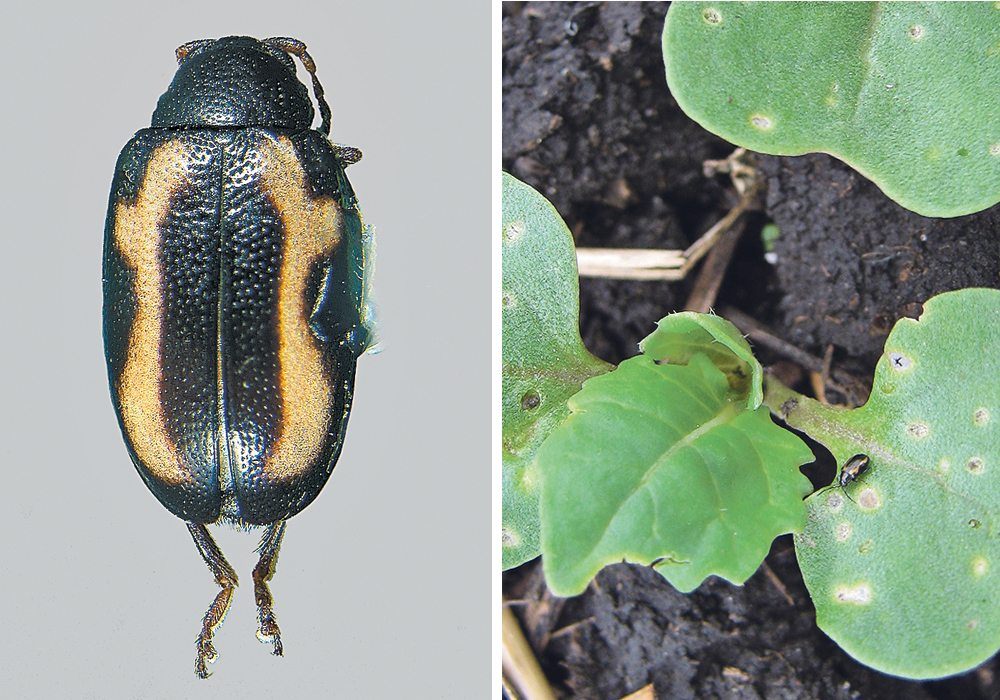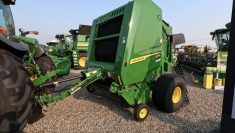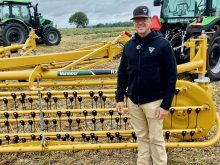Neonicotinoids are applied to nearly every seed of canola planted in Western Canada.
The insecticides are ubiquitous because they’re effective at warding off flea beetles, a pest that feeds on canola leaves and stems early in the growing season.
Growers use neonicotinoids and another seed treatment chemistry, cyantraniliprole, as an insurance policy against flea beetles because it’s difficult to predict when, where and how many of the insects will appear in a particular region or a specific field.
University of Manitoba entomologists are attempting to fill in those blanks and find answers to the when, where and how many questions.
Read Also

China’s grain imports have slumped big-time
China purchased just over 20 million tonnes of wheat, corn, barley and sorghum last year, that is well below the 60 million tonnes purchased in 2021-22.
“Flea beetles occur in unpredictable numbers and locations every year in the Canadian Prairies,” says a U of M website that explains the flea beetle research.
“The main goal of this project is to define landscape characteristics that limit flea beetle populations and increase mortality of flea beetles by natural enemies in canola. In addition … we are collecting data on abiotic factors to develop prediction models of flea beetle abundance that will help guide management decisions.”
Flea beetles are an enormous problem in Canada’s canola industry. It’s estimated they cause yield losses worth $300 million a year. Neonicotinoid seed treatments help reduce yield losses, but there are no guarantees that the technology will continue to be effective.
Insects typically evolve resistance to insecticides when the same products are used over and over again.
“The amount of acres we’ve now deployed them, on basically every planted seed over the last 15 years or so, we really can’t expect that they’re going to last forever,” said Greg Sekulic, a Canola Council of Canada agronomist in Alberta.
“You look at every other insect on the planet and every other compound on the planet — with enough selection pressure, we will break it.”
If it was possible to predict flea beetle pressure, including what type of beetles are likely to emerge in the spring, growers could choose a seed treatment appropriate for the conditions or possibly forgo an insecticidal seed coating.
Alejandro Costamagna, a U of M entomologist, is leading the project to understand the factors that influence flea beetle abundance, such as the number of natural predators and environmental conditions in a region.
To help build the predictive model, U of M scientists have placed sticky cards in about 80 canola fields across Western Canada during the last three growing seasons.
“(On) the sticky cards we find flea beetles. We count them and then determine the species,” said Tharshi Nagalingam, a post doctoral researcher in Costamagna’s lab.
Besides counting flea beetles, Nagalingam is also counting the number of predator species that are the natural enemies of flea beetles.
The U of M scientists are also tracking local conditions, such as air temperature, relative humidity and soil temperature, to understand how that influences flea beetle pressure.
Another factor to consider is the flea beetle population in the previous year.
“They overwinter as adults … so if there are more adults in that field, next year if you plant canola or canola adjacent to that field, then you (have) a problem,” said Nagalingam, who spoke about flea beetles at CanoLab, a canola council agronomy workshop held mid-March in Brandon.
The sticky card beetle counts, weather information and soil temperatures have been passed on to a private company, which is working on a computer model to predict flea beetle pressure.
It could take years to develop a smartphone app or another reliable tool to predict flea beetle pressure because insects are complex and there are major gaps in the scientific knowledge.
For instance, scientists don’t fully understand why one canola field has severe flea beetle pressure in the spring and another, a couple of kilometres away, has minimal pressure.
“It’s really a challenge…. Fields very close by, they have differences in population,” Nagalingam said.
“The research is in the preliminary level. We’re just collecting the data…. Eighty fields may not be enough.”
















